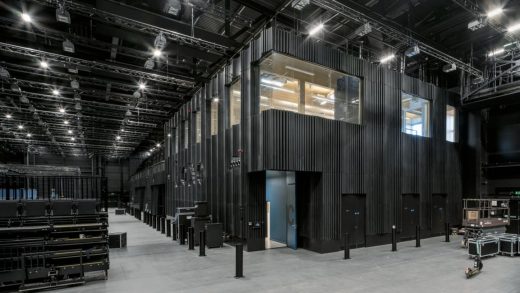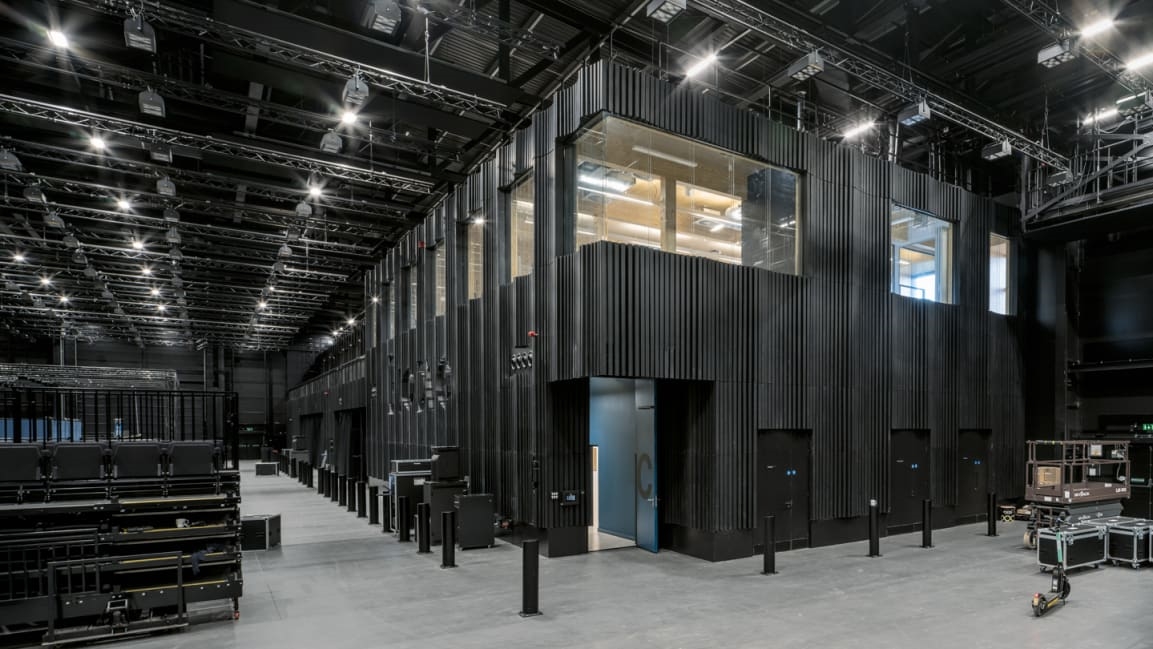Inside the massive lab where researchers are testing scooter sounds and safer sidewalks
“A building to house the world.” That’s what the architects of a remarkable new research lab in East London were tasked with designing.
The building in question is a gigantic testing ground for simulating life-sized urban environments like railway stations, town squares, and main streets. The goal is to understand how people of all abilities perceive and interact with these environments by simulating them under controlled conditions where everything, from light to sound to the way the floor can be configured to tilt in any direction, can be controlled. The ultimate goal? To use those findings and rethink our environments using an evidence-based understanding of how people move through space.
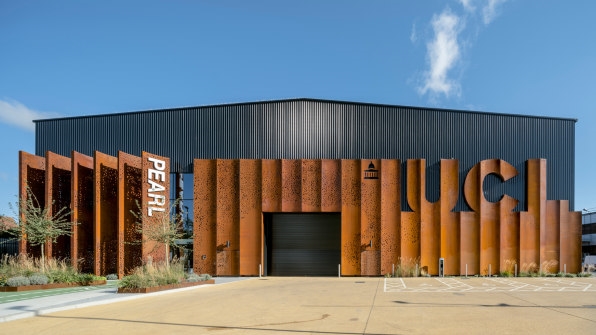
The so-called Person-Environment-Activity Research Laboratory (PEARL) was designed by London architecture firm Penoyre & Prasad, in collaboration with University College London’s Centre for Transport Studies director Nick Tyler. The building was completed in April 2021, but after almost a year of fine-tuning the technical interior, experiments have begun.
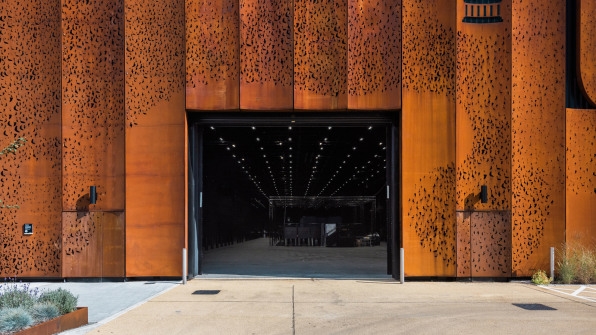
First on the agenda is figuring out what kind of sound electric scooters could make to alert pedestrians of their presence, including lights for people with hearing loss. Other experiments will look at how people move in and out of trains at busy train stations, how softer rubber sidewalks could lessen the shock on our bodies, and how planes can be redesigned for better ergonomics (thanks to a decommissioned plane that will sit in the courtyard and connect to the building via two jetways).
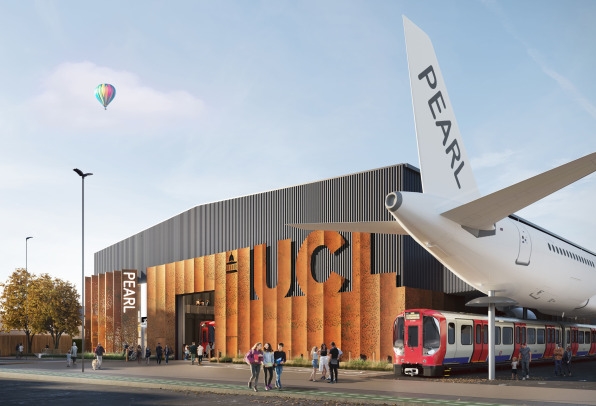
Spanning 43,000 square feet—with 32-foot-tall ceilings and a span of more than 130 feet—the building is equipped with more than 200 ambient speakers, 300 specialty lights, and other equipment, props, cameras, and sensors to simulate a variety of conditions. “Essentially, the building is a big box of tricks,” says Ian Goodfellow, a principal and design director at Penoyre & Prasad.
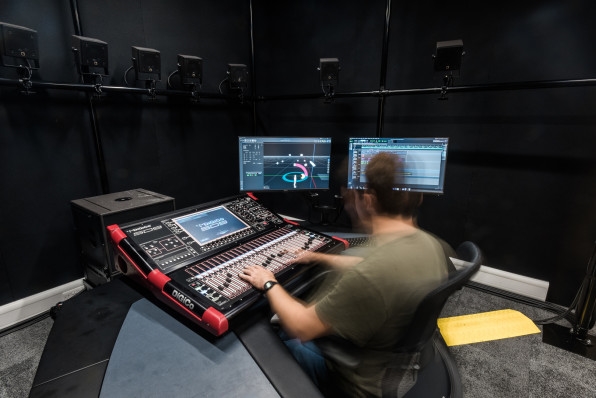
Most of the equipment is suspended from a series of rigs reminiscent of theater trusses. In fact, the architects drew a lot of inspiration from theater design. Goodfellow says they visited both the Royal Opera House and the National Theatre in London. On the stage of the National Theatre, they even had a realization: In theater, the role of a set designer is to convince the audience that what is happening is real. At PEARL, the role of the architects was to convince the actual participants that what is happening is real. For that to happen, the building had to take a step back and make room for the experiments. “It’s a non-space in which to construct these environments,” says Goodfellow.
As a result, most of the interior is clad in all-black materials so the building can disappear into the background, and the background sound level and reverberation are very low. For example, the HVAC system was designed so that a series of vents descend into the space and deliver heat directly to certain zones, which helps reduce the air velocity (and noise) that would’ve been required had the vents been higher up.
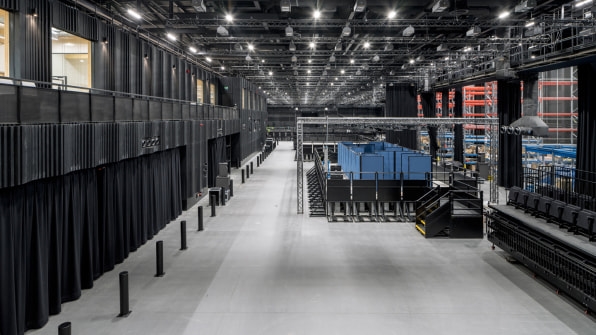
The absence of sound is a core element of the research center’s first experiment. At the beginning of February, PEARL started a project with Transport for London and e-scooter operators Lime, Tier, and Dott, to develop and test a universal warning sound, after several scooter collisions in the U.K. (Electric cars have been dealing with similar challenges.)
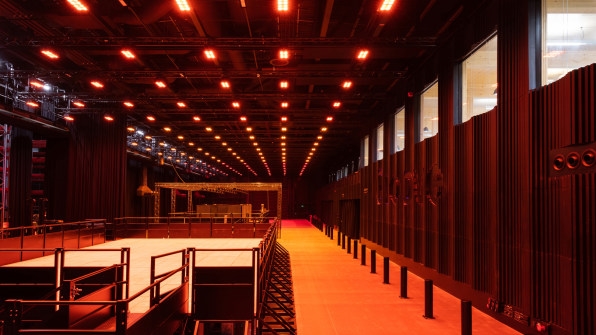
Tyler explains that the scooter sound must be distinctive enough for everyone to hear, yet quiet enough so it doesn’t add to the pre-existing urban cacophony of sounds. To simulate a real-life scenario, his team will use real recordings of busy streets, which they can manipulate and split across the building’s different speakers to simulate a real-life street. Then, the warning sound will be developed in the building’s sound lab. It’s too early to tell what that might sound like, but Tyler says it must have a wide frequency range so it can be heard by a variety of people. (And because a warning sound wouldn’t help a hearing-impaired pedestrian, the team is also looking at warning-light solutions.)
Once the sound is developed, the researchers will “slot” it into the soundscape for participants to test it out against the sound of traffic. To make it feel even more realistic, Tyler says they’re going to build a set that mimics a pedestrian square.
In many ways, the building is an ode to the senses. When we go out into the world, we use touch, smell, hearing, and even taste to interact with our surroundings, but most of the time, the only sense that architects design for is sight. “The only way you know the world is through your senses,” says Tyler. “To understand how we perceive the world, which is what we’re after, we have to be able to control the environment in each of those senses.”
(23)

